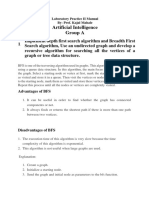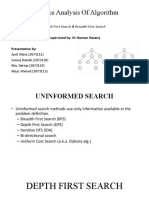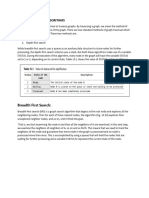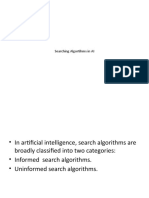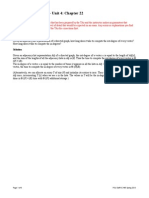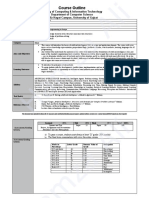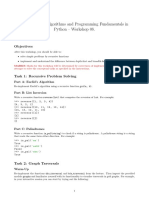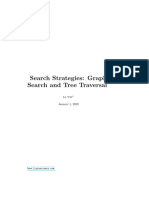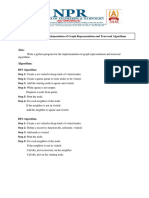0% found this document useful (0 votes)
8 views15 pages2nd Module
Uninformed search algorithms, also known as blind search algorithms, explore problem spaces without domain-specific knowledge, relying solely on the problem definition. Key types include Breadth-First Search (BFS), Depth-First Search (DFS), and Uniform-Cost Search (UCS), each with distinct strategies for node exploration. In contrast, informed search algorithms utilize heuristics to guide the search process more efficiently, exemplified by the A* search algorithm, which combines actual and estimated costs to find optimal paths.
Uploaded by
Prajukta DasCopyright
© © All Rights Reserved
We take content rights seriously. If you suspect this is your content, claim it here.
Available Formats
Download as PDF, TXT or read online on Scribd
0% found this document useful (0 votes)
8 views15 pages2nd Module
Uninformed search algorithms, also known as blind search algorithms, explore problem spaces without domain-specific knowledge, relying solely on the problem definition. Key types include Breadth-First Search (BFS), Depth-First Search (DFS), and Uniform-Cost Search (UCS), each with distinct strategies for node exploration. In contrast, informed search algorithms utilize heuristics to guide the search process more efficiently, exemplified by the A* search algorithm, which combines actual and estimated costs to find optimal paths.
Uploaded by
Prajukta DasCopyright
© © All Rights Reserved
We take content rights seriously. If you suspect this is your content, claim it here.
Available Formats
Download as PDF, TXT or read online on Scribd
/ 15




